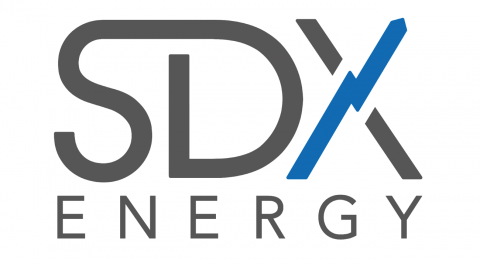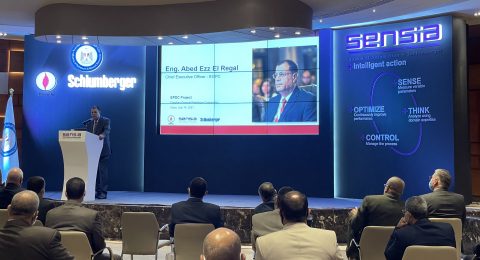Natural gas wells are susceptible to condensate drop out, as the wells are typically operated below the dew point pressure of the reservoir. The condensate accumulates in the near well bore region, which results in a decrease in production. Even in a lean gas reservoir (<1% dropout), significant amounts of fluid can accumulate reducing production by a factor of two or three. The amount of blocking depends on several factors including fluid properties, formation characteristics, flow rate and pressure.
Background
Firoozabadi and co-workers first proposed using chemicals to alter the wettability of the formation in the near wellbore region to mitigate the damage caused by condensate blocking. Most gas reservoirs are thought to be water wet. It is predicted that by changing the wettability to neutral wet (contact angle of ~90°), the steady state relative permeability of the condensate and gas would both increase thus resulting in substantial increases in the productivity of gas wells with condensate flowing into the well.
More recently, we have found chemical treatments can also increase the steady state relative permeability of gas and water thus mitigating the damage caused by water blocking when water invades the gas zone of a laboratory core.


Experimental
Figure 1 shows a schematic diagram of the core flood apparatus. The apparatus is rated for temperatures up to 400°F and pressures up to 10,000 psig. The maximum flow rate that can be attained is about 7,000 cc/hr. Experiments were performed with different synthetic gas-condensate fluids at temperatures ranging from 145-325°F. Berea sandstone and reservoir sandstone core plugs from gas condensate wells were used in the core flood experiments.
The pseudo pressure method was used to obtain the steady state gas and condensate relative permeability in the cores at reservoir temperatures and pressures. The single-phase gas permeability was first measured by flowing either nitrogen or methane through the core at different constant flow rates using a positive displacement pump until a steady state was reached. Connate water was then metered into the core and the gas permeability measurements repeated.
Various brine compositions were used corresponding to the connate water of target reservoirs. The synthetic gas condensate mixture was then injected in the core. The condensate injected into the core accumulates with time and reduces the relative permeability to gas. The gas and condensate reach a steady state fractional flow that depends on the PVT characteristics of the fluid and the pressure.
Next a treatment solution was injected into the core. Approximately 20 pore volumes of the solution were injected and 24 hours of shut-in time was allowed for the interaction of chemical with the rock. The condensate accumulation step was then repeated at the same conditions and the steady state gas and condensate relative permeability were again measured. The pressure drop measured prior to treatment and then after treatment is used to determine the ΔP for the treatment. The ratio of the pressure before treatment to after treatment is the improvement factor or PI ratio.
The final step for each experiment was to inject methane until the condensate is removed from the core so the final steady state gas permeability could be compared with the initial dry gas permeability at the same flow rate.
No reduction in permeability was measured in any of the experiments described in this work. The treatments, L19945 and L19973 were obtained from 3M Company, St. Paul, MN, and USA. L19945 is a fluorinated polymeric material dissolved in propylene glycol/isopropanol solvents. L19973 is fluorinated polymeric material dissolved in 2-butoxyethanol/ethanol solvents.


Discussion
Due to the requirement of a contact angle of ~90° versus a hydrocarbon fluid, it was deemed that a fluorochemical would be needed. For such a treatment to be effective it needs to be durable for long periods of time at high temperatures and high flow rates. The work of others has focused on utilizing fluorinated alkoxysilanes so that these materials would form a covalent bond to a sandstone formation. However, it was felt that reactive chemistries could be difficult to reliably deliver as desired under some reservoir conditions.
The chemicals in this study are non-reactive and interact with the substrate under reservoir conditions. These materials adsorb to the sandstone surface, providing the wettability alteration. In the laboratory, these treatments have been shown to be durable for thousands of pore volumes of subsequent flow of the gas-condensate fluid, but it is not feasible to flow as much or as long in the laboratory as will occur near a treated well so long term durability must be demonstrated in the field.
Much of the work has focused on the development of solvents for delivering the treatment. Initial work utilized methanol, which previously had been shown to be effective in the laboratory and the field for reducing the condensate bank and removing connate water. Laboratory experiments indicated that methanol was not able to both deliver the treatment in addition to removing the water.
Screening tests were developed to evaluate the ability of a solvent system to deliver the treatment under the reservoir conditions. These screening tests were key to shortening the development process for the new solvent systems. Although several systems were found to be effective, research focused on two basic solvent systems, propylene glycol/isopropanol (L19945) and 2-butoxyethanol/ethanol (L19973), which were developed for subsequent work on delivering the treatment under reservoir conditions.
Experiments on condensate blocking were conducted in either Berea sandstone or reservoir cores obtained from several reservoirs around the world. In these experiments, it was found that the condensate bank in the core could be reduced and essentially all of the connate water that had been introduced into the core was removed by the solvents. Karl Fischer tests confirmed that less than one percent of the original amount of brine put into the core remained after treatment. Upon introducing the synthetic gas mixture after treatment, it was found that the pressure drop was reduced by two to three times the value obtained prior to treatment.
Figure 2 is an example of typical data obtained from these experiments. Table 1 provides improvement factors obtained post treatment for several temperatures for the two treatment solutions. It is important to note that the chemical treatment never caused any damage to these or any other cores tested in our laboratory including cores with a gas permeability of less than 1 mD. Waterblock experiments were conducted on both Berea and reservoir sandstone cores. In these instances, large volumes of brine were introduced into the cores, either by placing it there prior to the introduction of the synthetic gas mixture or as flowing water during the experiment. Figure 3 shows the data from one of the more demanding series of tests that were conducted on a core in order to attempt to cause the treatment to fail. The experiment was run at 175° with Swi=19% and a brine concentration of 73,000 ppm TDS. L19973 was used as a treatment solution. The initial experiment was conducted as described above. After introducing the treatment, the improvement factor was found to be 1.88.
In the second step of this experiment, two pore volumes of three-phase flow (gas, condensate and water) were introduced into the core. The water had a fractional flow of 0.038. Solvents (2-butoxyethanol/ethanol) were introduced into the core to flush out the water. Then gas-condensate (condensate flood 4) was introduced into the core and the relative permeability were determined again. An improvement factor of 2.05 was obtained at this step.
The third step of this experiment was to introduce one pore volume of pure brine (fractional flow of 1.0). Again the water was flushed with solvents (2-butoxyethanol/ethanol), followed by flushing with the gas condensate mixture (condensate flood 5) and determination of the relative permeability. After this step, an improvement factor of 1.86 was obtained.
The final step of this experiment was to introduce ten pore volumes of brine (fractional flow of 1.0). This resulted in the core’s water saturation reaching approximately eighty percent (Swi~0.80). Again, the core was flushed with solvents (2-butoxyethanol/ethanol) followed by a gas condensate flood (condensate flood 7) and determination of the relative permeability. In this final step, an improvement factor of 1.62. This step was followed by a single-phase gas flood and no reduction in permeability was detected. Table 2 provides the data for this experiment.
This multi-step experiment shows that even under extreme conditions, a sixty percent increase in gas relative permeability could be obtained. Typically improvement factors for water block have been three to five times greater than an untreated core. This increase over straight gas condensate experiments is due to the immense damage done to a core or reservoir by water.
With the surface tension of water being so high, trapping in the pores causes a large rise in capillary pressure, leading to an increase in the liquid saturation and a subsequent decrease in gas production.
An additional water block experiment was performed, but without condensate being present. In this experiment, a lean gas (methane only) was introduced into a core with Swi~0.30. Following treatment, gas production increased thirty percent over the untreated core. This was somewhat surprising since it is commonly believed that smaller amounts of connate water do not contribute to a reduction in gas relative permeability. This experiment suggests otherwise.
The results that were obtained from these experiments were surprising. Exemplary data can be found in Table 3. Some of the improvement can be attributed to the role of non-Darcy effects. The gas velocity is very high in a propped core fracture compared to the matrix and thus non-Darcy flow contributes more to the pressure drop in the fracture than in the matrix. By treating the fractured core and reducing the liquid saturation, non-Darcy effects can be reduced, resulting in greater increases in production rates.


Jimmie R. Baran, Jr., Gary A. Pope, Mukul Sharma, Vishal Bang, Harold C. Linnemeyer, Mohabbat Ahmadi and John D. Skildum (Center for Petroleum and Geosystems Engineering, The University of Texas at Austin;
3M Company, 3M Center, St. Paul, MN)







